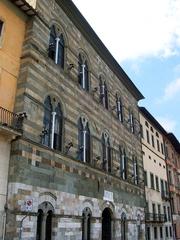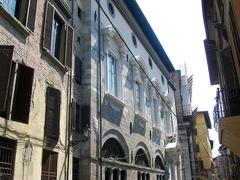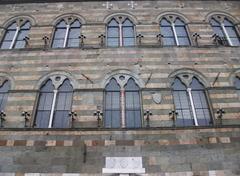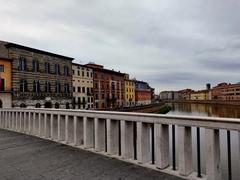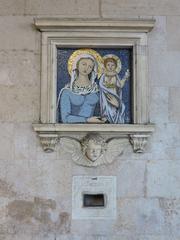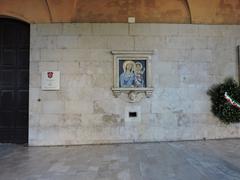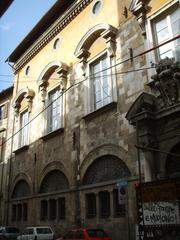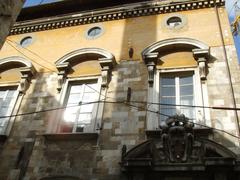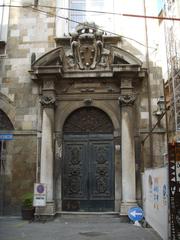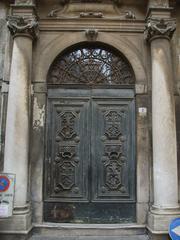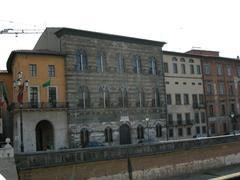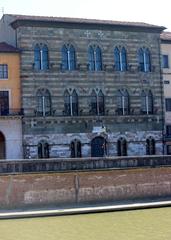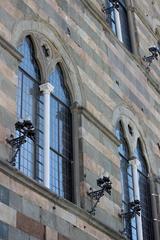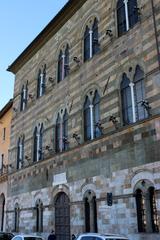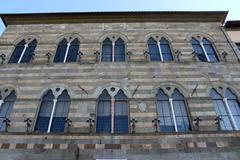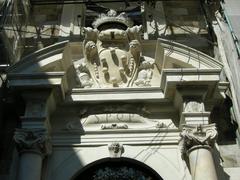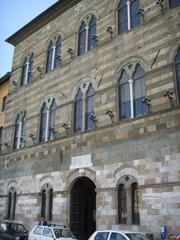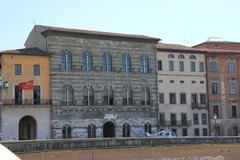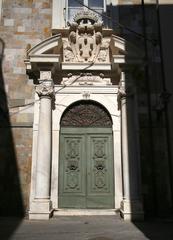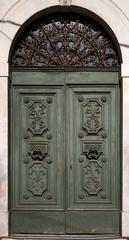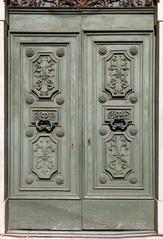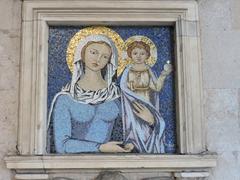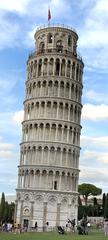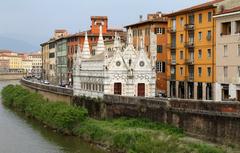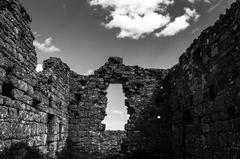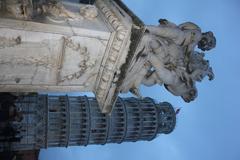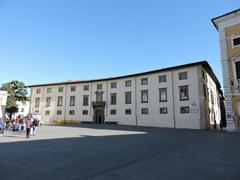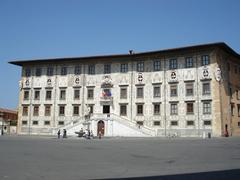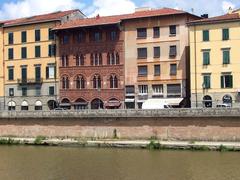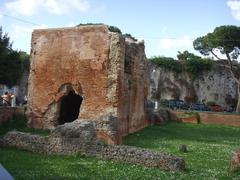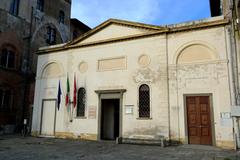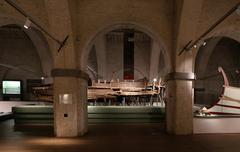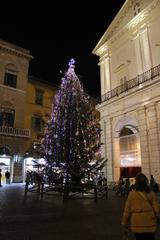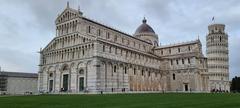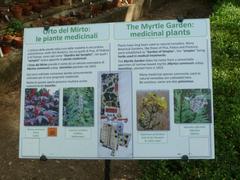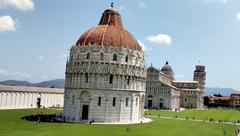
Komplexní průvodce návštěvou města Pisa, Itálie
Datum publikace: 31/07/2024
Úvod do města Pisa
Pisa, malebné město v regionu Toskánsko v Itálii, je známé svým historickým významem, úchvatnou architekturou a živou kulturní scénou. Globalně proslulé ikonickou šikmou věží, Pisa nabízí fascinující cestu časem, od svých tajemných starověkých počátků až po její zlatý věk jako mocné námořní republiky a od uměleckého oživení pod Medici po dynamickou moderní atmosféru. Umístěné podél řeky Arno, strategická poloha města přispěla k jeho brzké významnosti jako klíčového přístavu během Římské říše. Historie Pisy je poznamenaná architektonickými zázraky, jako je Šikmá věž, Katedrála v Pise a Baptisterium, které jsou součástí světového dědictví UNESCO známého jako Piazza dei Miracoli (Italia.it). Návštěvníci Pisy mohou prozkoumat množství atrakcí, včetně majestátního Camposanto Monumentale a živého Piazza dei Cavalieri. Bohatá kulturní dědictví města je také patrné v jeho mnoha muzeích, jako je Museo dell’Opera del Duomo a Museo Nazionale di San Matteo (Two Wandering Soles). Ať už vás přitahují historické památky, kulturní festivaly nebo kulinářské speciality, Pisa slibuje nezapomenutelný zážitek pro každého cestovatele.
Obsah
- Úvod
- Zkoumání historie Pisy: Otevírací hodiny, vstupenky a klíčové historické památky
- Klíčové historické památky
- Informace pro návštěvníky
- Často kladené dotazy (FAQ)
- Závěr
- Reference
Zkoumání historie Pisy: Otevírací hodiny, vstupenky a klíčové historické památky
Starověké kořeny a raný rozvoj Pisy
Pisa’s origins are shrouded in mystery, with some historians suggesting ancient Greek roots, while others attribute its foundation to the Etruscan period. Regardless of its exact beginnings, Pisa’s strategic location along the Arno River and near the Tyrrhenian Sea facilitated its early development as a significant settlement. By the time of the Roman Empire, Pisa had already established itself as a crucial port city, contributing to its growth and prosperity.
Vzestup námořní republiky
Pisa’s golden age began in the 11th century when it emerged as a powerful Maritime Republic. This period marked the city’s first significant phase of economic, political, and artistic splendor. Pisa’s naval prowess allowed it to dominate Mediterranean trade routes, establishing lucrative connections with the Middle East and North Africa. The city’s success in the First Crusade further solidified its influence, leading to the construction of grandiose buildings such as the Piazza dei Miracoli, the Duomo, and the Piazza dei Cavalieri (Italia.it).
Architektonické a kulturní rozkvět
During the 11th and 12th centuries, Pisa experienced a remarkable architectural and cultural flourishing. The construction of the Leaning Tower of Pisa, which began in 1173, is perhaps the most iconic symbol of this era. The tower’s distinctive tilt, caused by ground subsidence during its early stages, has made it one of the most recognizable landmarks in the world. Alongside the tower, the Piazza dei Miracoli complex includes the Pisa Cathedral, the Baptistery, and the Camposanto Monumentale, all of which showcase the city’s artistic and architectural achievements (Voyage Tips).
Úpadek a dobytí
Pisa’s dominance as a maritime power began to wane in the late 13th century. The Battle of Meloria in 1284, where Pisa suffered a crushing defeat at the hands of Genoa, marked the beginning of the city’s decline. This loss significantly weakened Pisa’s naval capabilities and disrupted its trade activities. Over the following centuries, Pisa fell under the control of various ruling families, including the Lords of Uguccione della Faggiola, the della Gherardesca family, and the Visconti family of Milan (Italia.it).
Období Medici a umělecké oživení
In 1406, Pisa was conquered by Florence, ushering in a new era under the Medici family’s rule. The Medici ensured a period of recovery and artistic revival for Pisa, commissioning numerous works of great importance. This period saw the construction of several significant buildings and the enhancement of existing structures, contributing to the city’s rich architectural heritage. The Medici’s influence also extended to the University of Pisa, which became a renowned center of learning and scholarship (Italia.it).
Napoleonovo vliv
The 19th century brought further changes to Pisa, particularly during the Napoleonic era. Napoleon Bonaparte founded the Scuola Normale Superiore in 1810, which remains one of Italy’s most prestigious universities. This institution played a crucial role in Pisa’s intellectual and academic development, attracting scholars and students from around the world. In 1860, Pisa was incorporated into the newly unified Kingdom of Italy, marking another significant chapter in its history (Italia.it).
Moderní Pisa: Mix minulosti a přítomnosti
Today, Pisa is a vibrant city that seamlessly blends its rich historical heritage with modern life. The University of Pisa continues to be a major academic institution, contributing to the city’s youthful and dynamic atmosphere. Pisa’s historical landmarks, including the Leaning Tower, the Piazza dei Miracoli, and the various medieval churches and palaces, attract millions of visitors each year. The city’s cultural and artistic legacy is preserved in its museums, such as the Museo dell’Opera del Duomo and the Museo Nazionale di San Matteo (Two Wandering Soles).
Klíčové historické památky
Piazza dei Miracoli
The Piazza dei Miracoli, also known as the Square of Miracles, is the heart of Pisa’s historical and architectural heritage. This UNESCO World Heritage Site includes the Leaning Tower, the Pisa Cathedral, the Baptistery, and the Camposanto Monumentale. Each of these structures represents a masterpiece of medieval architecture and art, reflecting the city’s historical significance and cultural achievements (Visit Italy).
Šikmá věž v Pise
The Leaning Tower of Pisa is undoubtedly the most famous landmark in the city. Its construction began in 1173 and continued for nearly 200 years. The tower’s unintended tilt, caused by unstable foundation soil, has made it an architectural marvel and a symbol of Pisa’s resilience and ingenuity. Visitors can climb the tower’s 294 steps to enjoy panoramic views of the city and the surrounding Tuscan landscape. For visiting hours and ticket information, check the official website (Voyage Tips).
Katedrála v Pise a Baptisterium
The Pisa Cathedral, also known as the Duomo, is a stunning example of Romanesque architecture. Its construction began in 1064, and it features intricate marble facades, ornate sculptures, and beautiful frescoes. The adjacent Baptistery, dedicated to St. John the Baptist, is the largest of its kind in the world. Its construction started in 1153, and it boasts a unique blend of Romanesque and Gothic architectural elements. Be sure to check visiting hours and ticket prices before your visit (Italia.it).
Camposanto Monumentale
The Camposanto Monumentale, or Monumental Cemetery, is another significant site within the Piazza dei Miracoli. It was constructed in 1278 and is renowned for its impressive frescoes and the sacred soil it contains, which was brought back from Golgotha during the Crusades. The cemetery serves as the final resting place for many notable figures from Pisa’s history, including members of the Medici family and famous professors from the University of Pisa. Check the official website for visiting hours and ticket details (Two Wandering Soles).
Informace pro návštěvníky
- Otevírací hodiny: Většina historických památek v Pise má specifické otevírací hodiny, které se mohou lišit podle sezóny. Doporučuje se zkontrolovat oficiální webové stránky každého místa pro nejaktuálnější informace.
- Vstupenky: Ceny vstupenek na Šikmou věž a další místa se mohou lišit. Objednání vstupenek online předem je často doporučeno k vyhnutí se dlouhým frontám.
- Cestovní tipy: Zvažte návštěvu během mimo sezóny (na jaře a na podzim) pro méně lidí a příjemné počasí. Použijte veřejnou dopravu nebo choďte pěšky, abyste se orientovali v kompaktním centru města.
- Blízké atrakce: Prozkoumejte další toskánská města, jako jsou Florencie a Lucca, které jsou snadno dostupná vlakem z Pisy. Toskánský venkov také nabízí krásné krajiny a malebné vesnice.
- Přístupnost: Mnoho historických památek v Pise je přístupných pro návštěvníky s postižením, ale doporučuje se zkontrolovat specifické informace o přístupnosti na oficiálních webových stránkách.
Často kladené dotazy (FAQ)
Q: Jaké jsou otevírací hodiny pro Šikmou věž v Pise?
A: Otevírací hodiny se mohou lišit, takže je nejlepší zkontrolovat oficiální webové stránky pro aktuální informace.
Q: Kolik stojí vstupenky na Šikmou věž v Pise?
A: Ceny vstupenek se mohou lišit. Doporučuje se zakoupit vstupenky online předem, abyste si zajistili návštěvu a vyhnuli se dlouhým frontám.
Q: Kdy je nejlepší čas na návštěvu Pisy?
A: Mimo hlavní sezóny (na jaře a na podzim) jsou ideální pro návštěvu Pisy, protože je méně lidí a příjemné počasí.
Q: Jsou k dispozici průvodce pro historické památky Pisy?
A: Ano, průvodci jsou k dispozici a mohou poskytnout cenné informace o historii a architektuře Pisy. Zkontrolujte místní turistické kanceláře nebo oficiální webové stránky pro více informací.
Závěr
Pisa encapsulates the essence of Tuscany’s rich historical and cultural heritage. From its renowned Leaning Tower to its less famous yet equally captivating sites like the Camposanto Monumentale and the Piazza dei Cavalieri, the city offers a blend of architectural brilliance and historical depth. Visitors can immerse themselves in the local culture by exploring art museums, participating in traditional festivals, and savoring the region’s culinary delights. The city’s strategic location also makes it an ideal base for exploring the broader Tuscan landscape, with day trips to nearby cities like Florence, Lucca, and Siena offering additional layers of cultural richness. Whether you’re climbing the Leaning Tower’s 294 steps for a panoramic view or strolling through the historic streets of Borgo Stretto, Pisa provides a vibrant mix of experiences that cater to both history enthusiasts and casual tourists alike. The city’s commitment to preserving its heritage while embracing modernity ensures that every visit is a journey through time and a celebration of cultural resilience. For those planning a visit, checking the most recent visitor information and purchasing tickets in advance can enhance the overall experience. Embrace the charm of this Tuscan gem and create lasting memories in a city where the past and present harmoniously coexist (Nomadic Matt).
Reference
- Italia.it. (n.d.). Explore Pisa. https://www.italia.it/en/tuscany/pisa/guide-history-facts
- Two Wandering Soles. (n.d.). Things to do in Pisa. https://www.twowanderingsoles.com/blog/things-to-do-in-pisa
- Voyage Tips. (n.d.). Things to do in Pisa. https://www.voyagetips.com/en/things-to-do-in-pisa/
- Nomadic Matt. (n.d.). Pisa Travel Guide. https://www.nomadicmatt.com/travel-guides/italy-travel-tips/pisa/
- Essence Holiday. (n.d.). Pisa Travel Guide. https://www.essenceholiday.com/pisa-travel-guide/
- Turismo Pisa. (n.d.). Things to do in Pisa. https://www.turismo.pisa.it/en/
